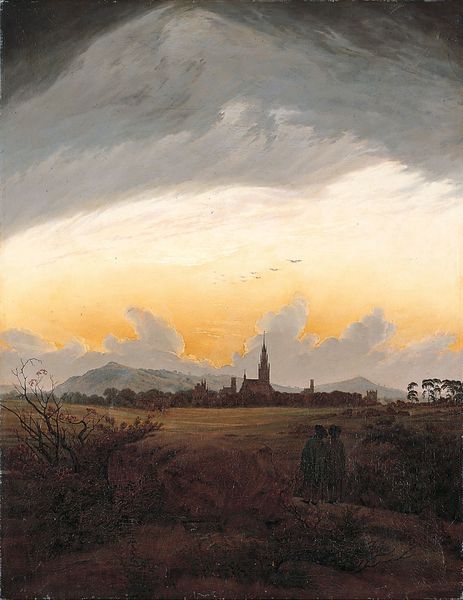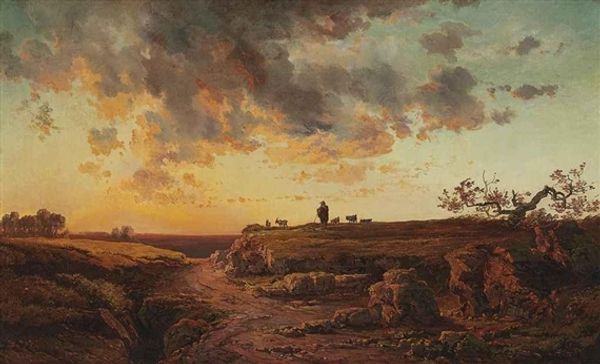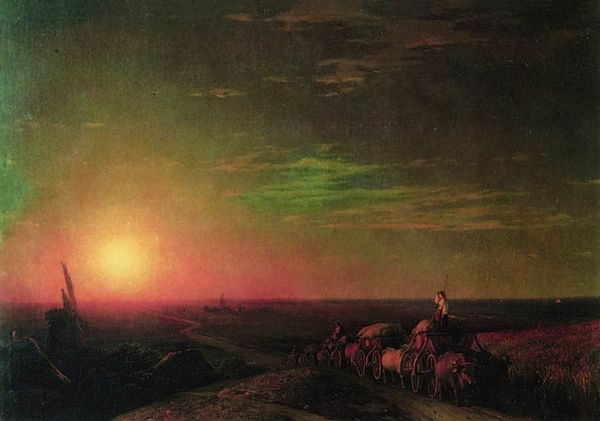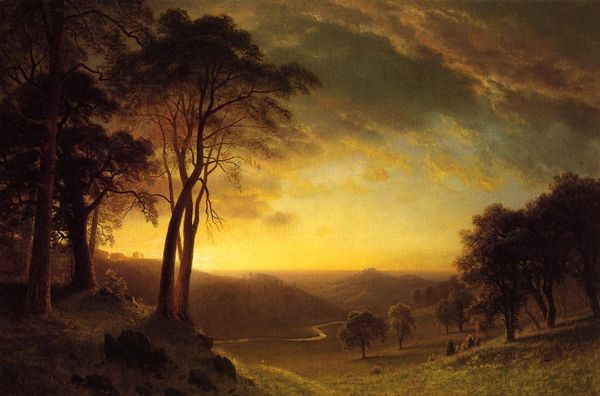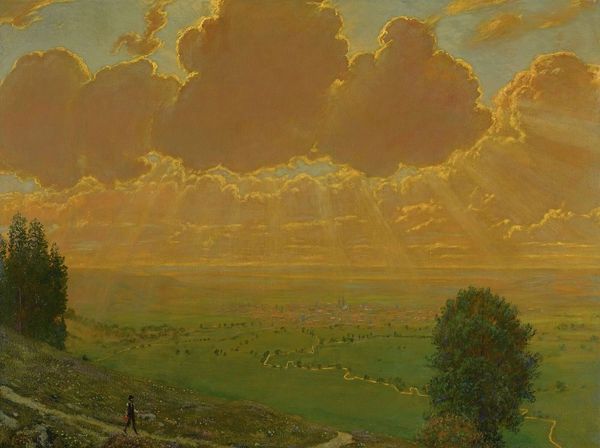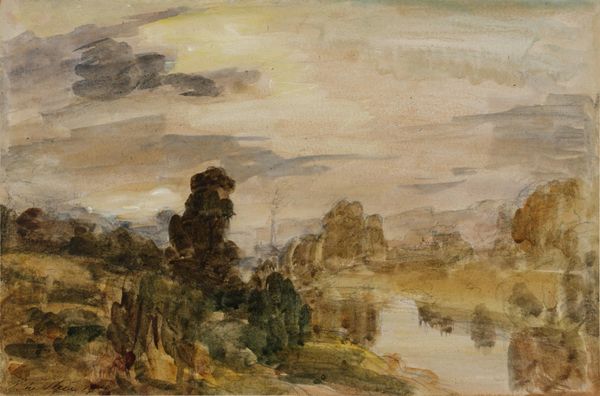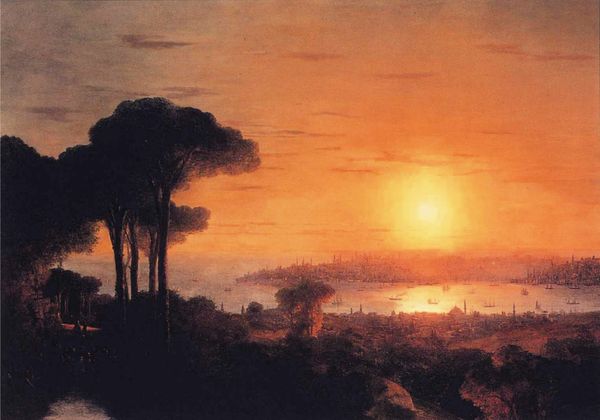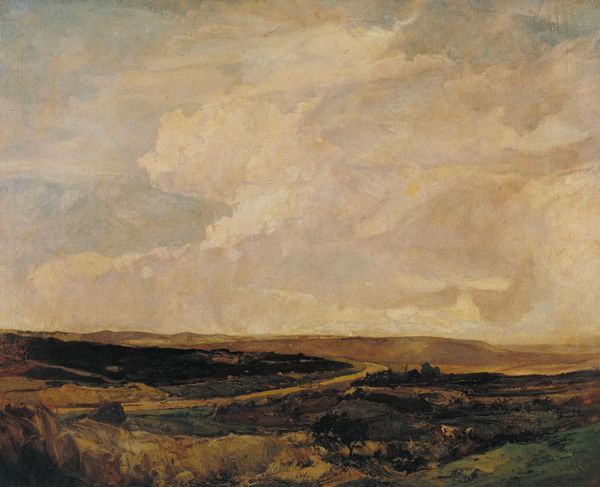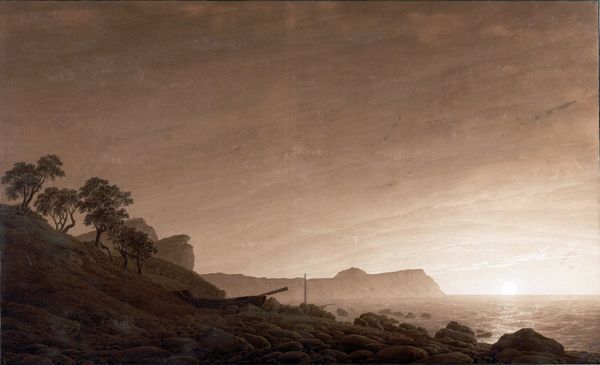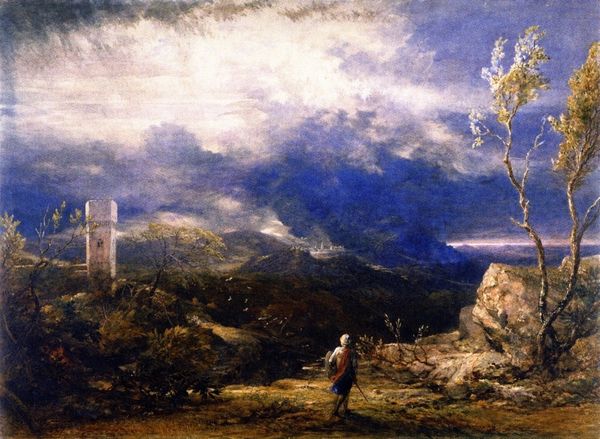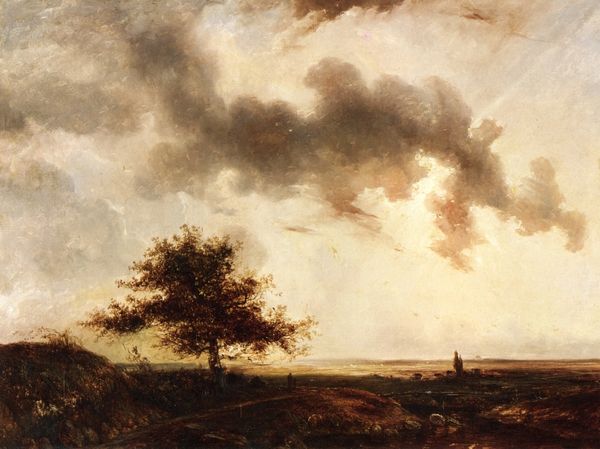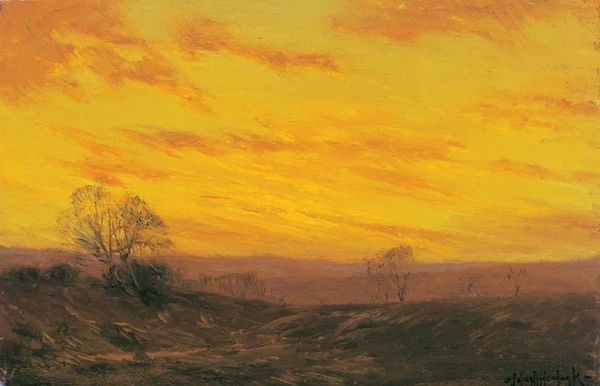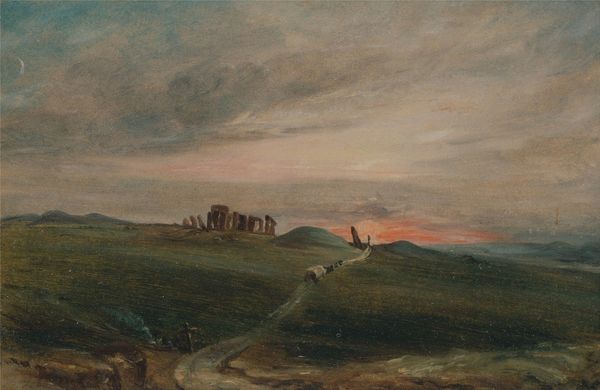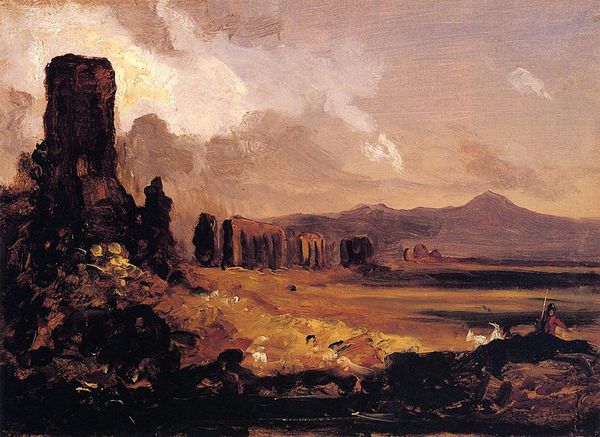
plein-air, oil-paint
#
plein-air
#
oil-paint
#
landscape
#
form
#
oil painting
#
romanticism
#
cityscape
#
realism
Dimensions: 91 x 72 cm
Copyright: Public domain
Art Historian: Caspar David Friedrich painted "Neubrandenburg" in 1817 using oil on canvas. It now resides in the Pomeranian State Museum in Greifswald. Curator: It's striking how small the human figures seem against that vast sky. A sense of overwhelming nature dominates here. Art Historian: Friedrich was a master of Romanticism. Look at the deliberate symbolism: the towering church spire piercing the heavens, contrasted with the small human figures. It speaks of aspiration, but also human insignificance against the divine. Curator: Insignificance, perhaps, but also the power structures inherent in religious institutions. Who are those two figures in the foreground? Are they dwarfed by the promise of salvation or liberation within that church? Art Historian: The figures often represent the artist himself or are stand-ins for the viewer. Notice their dark silhouettes, turned away from us, beckoning us to contemplate our own place within this spiritual landscape. It's a Rückenfigur, a common Romantic motif. Curator: And what about the historical context? This was painted after the Napoleonic Wars. Is this serene cityscape a celebration of restoration, or a melancholy acknowledgement of what was lost? Who benefited from this restoration? Was that promise equally afforded to all its inhabitants? Art Historian: The glow on the horizon certainly evokes hope. And light in Friedrich is often symbolic of spiritual illumination. Perhaps he’s suggesting renewal after a period of darkness. The golden sky—it’s transcendent! Curator: Transcendent for some, maybe. But art like this needs to be viewed with a critical eye. It's crucial to analyze the social conditions from which this idealized vision emerged and what narratives are excluded. Art Historian: I agree that context is vital, yet it does seem impossible to deny the enduring symbolic power of this particular cityscape, in the end. The way it reflects both human striving and a recognition of forces larger than ourselves. Curator: Indeed. This landscape offers a portal for reflection, so long as we dare to probe whose reflection we're truly seeing.
Comments
No comments
Be the first to comment and join the conversation on the ultimate creative platform.
